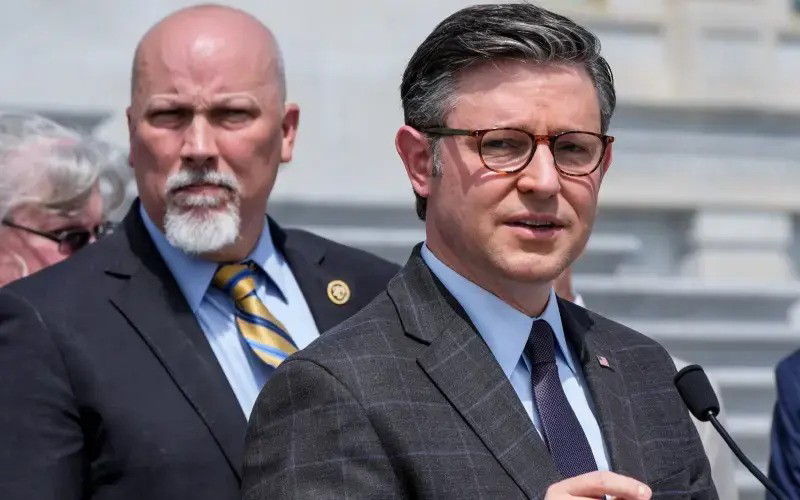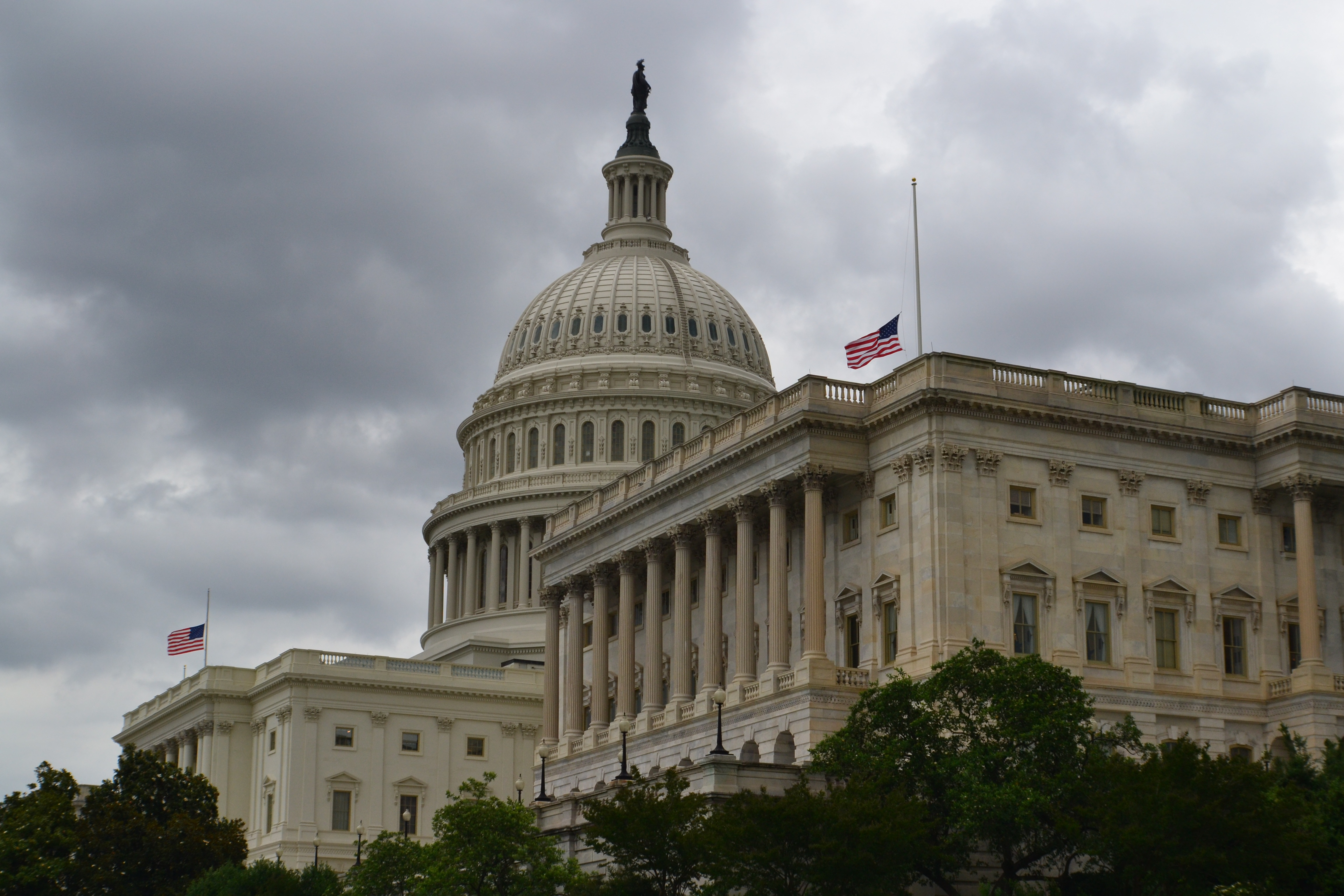Great Freedoms, Great Sacrifices
Sign up for a six month free
trial of The Stand Magazine!
“Our landings in the Cherbourg-Havre area have failed to gain a satisfactory foothold and I have withdrawn the troops. My decision to attack at this time and place was based upon the best information available. The troops, the air and the Navy did all that bravery and devotion to duty could do. If any blame or fault attaches to the attempt it is mine alone,” said General Dwight D. Eisenhower.
If Eisenhower’s words are unfamiliar, it’s likely because you have never read them.
Thankfully, the general’s “in case of failure” letter had been folded, kept in his wallet, and never had to be read.
What if the Allied powers had not defeated the Axis powers? What if D-Day failed? Since the war’s conclusion in 1945, there has been no shortage of words spent or ink spilled on how vastly different the world might look today if evil had triumphed.
Though the world owes a great debt of gratitude to those who sacrificed so much in World War II, victory was not inevitable, and the resultant freedoms of victory are often taken for granted.
Global war
Adolf Hitler’s rise to absolute power in Germany marked a turning point in world history. His hatred of Jewish people coupled with his ambitions of world domination created the perfect storm, culminating in a war like none the world had never seen.
Hitler was obsessed with gaining “living space” for the supposed superior race, which he called Aryans. He planned to take that space by conquering surrounding nations.
His aggression had already been on display, but in late August 1939, Hitler and Soviet leader Joseph Stalin entered the German-Soviet Nonaggression Pact. Hitler had long planned to take Poland to begin his expansion, and the pact offered assurance the neighboring Soviet Union would not interfere.
On September 1, 1939, Hitler invaded Poland. Great Britain and France had promised military support to Poland. Thus, two days later, both nations declared war on Germany, beginning WWII.
By June 1940, Hitler’s Germany advanced to the north to control Denmark and Norway, and to the west, controlling northern France and all of France’s Atlantic coastline down to the border with Spain.
Great Britain, though protected by the English Channel and the Royal Navy, was boxed in and was Hitler’s next target. Hitler planned a preemptive cross-channel invasion of Great Britain but was aware his efforts would likely prove unsuccessful if he did not first gain air superiority by weakening the Royal Air Force (RAF). Thus, from September 1940 until May 1941, German planes bombed Britain extensively.
The RAF proved too powerful, defeated the German Air Force, and forced Hitler to postpone his intended cross-channel invasion.
With Great Britain on the backburner, Hitler focused on a larger target that would provide the lands he so desperately desired. Breaking the pact he had signed with Stalin just two years earlier, on June 22, 1941, Hitler ordered the invasion of the Soviet Union. It was the largest military ground invasion in history, with over 3 million troops, more than half a million horses, and thousands of tanks and aircraft.
America enters the war
Prior to late 1941, the United States had hoped to remain unengaged in the war, as her citizens, being only two decades removed from the previous World War, had no will to engage in another conflict. America’s initial involvement consisted of supplying aid to the Allies through a program called Lend-Lease.
But that changed on December 7, 1941, with Japan’s historic surprise attack on Pearl Harbor. December 8, President Franklin Roosevelt delivered his famous “Day of Infamy” Speech, followed immediately by a congressional declaration of war. Three days later, December 11, Nazi Germany declared war against the U.S.
After Hitler’s attack on the Soviet Union, an unlikely alliance had formed between British Prime Minister Winston Churchill and Soviet leader Joseph Stalin. By November 1943, with the United States now engaged, the “Big Three” – Roosevelt, Churchill, and Stalin – had their first meeting to discuss stopping the Nazi war machine.
Operation Overlord
Before their first meeting in Tehran, Iran, took place, Operation Overlord, the codename given to the planned Allied invasion of western Europe, had been in the planning stages for some time. Stalin was pushing to open a second front in the European theater immediately, but working out the specifics of exactly when and where the operation would take place proved contentious. Furthermore, the three leaders had a difficult time agreeing on the reconstitution of post-war Europe.
After several days of suggestions, discussions, and concessions, a plan was finally agreed upon.
U.S., British, and Canadian forces would launch a simultaneous attack on five separate beachheads in Normandy, France, while Stalin’s Soviet forces would press in on Germany from the east.
One of the final details was choosing an Allied leader to oversee the strategic attack. Since the majority of forces allocated to the invasion were American, and with Churchill’s resources and manpower stretched so thin, he suggested Roosevelt appoint someone to lead the momentous attack.
Gen. Dwight David Eisenhower’s name rose to the top of the list. Eisenhower had established himself as an exceptional leader and planner, having more successful engagements than any other commander among the Western Allies over the past two years. In December 1943, Eisenhower was appointed Supreme Allied Commander of the Allied Expeditionary Force.
D-Day’s pivotal role
By May 1944, the Allies were finally prepared for their own cross-channel invasion at Normandy and set the date for June 5. Prohibitive weather forecasts caused a delay of 24 hours, moving the date to June 6.
Hitler was almost certain the invasion was imminent. But thanks to a highly detailed deception plan by Allied forces – fictitious military groups, imaginary forces, double-agents, fake radio traffic, inflatable tanks, dummy aircraft, and more at strategic locations – he was convinced the attack would occur at Pas-de-Calais, the most obvious choice, being the narrowest crossing of the channel. Hitler fortified his defenses accordingly.
Hitler never considered Normandy as the Allies’ target, more than 100 miles southwest of Pas-de-Calais.
On June 6, 1944, Allies launched the largest amphibious warfare operation in history. According to eisenhowerlibrary.gov, “The invasion force included 7,000 ships and landing craft manned by over 195,000 naval personnel from eight allied countries.”
Normandy was by no means left totally undefended, nor would it be easy to take. Facing fierce resistance from German forces, but not to be dissuaded and determined to bring an end to the war, Allied forces advanced slowly but surely.
Despite heavy casualties, by the end of August, Allied forces had liberated northern France. With Allies now driving into Germany, and Soviet forces simultaneously advancing from the east, the Nazi Reich was finally defeated.
The success of D-Day was costly. The U.S. Department of Defense estimates more than 9,000 Allied soldiers were killed or wounded in the first 24 hours of the invasion.
What if D-Day had failed? Speculation may continue for ages, but it will be just that – speculation. What can be stated for certain is that the world today would look vastly different.

Sign up for a free six-month trial of
The Stand Magazine!
Sign up for free to receive notable blogs delivered to your email weekly.



















